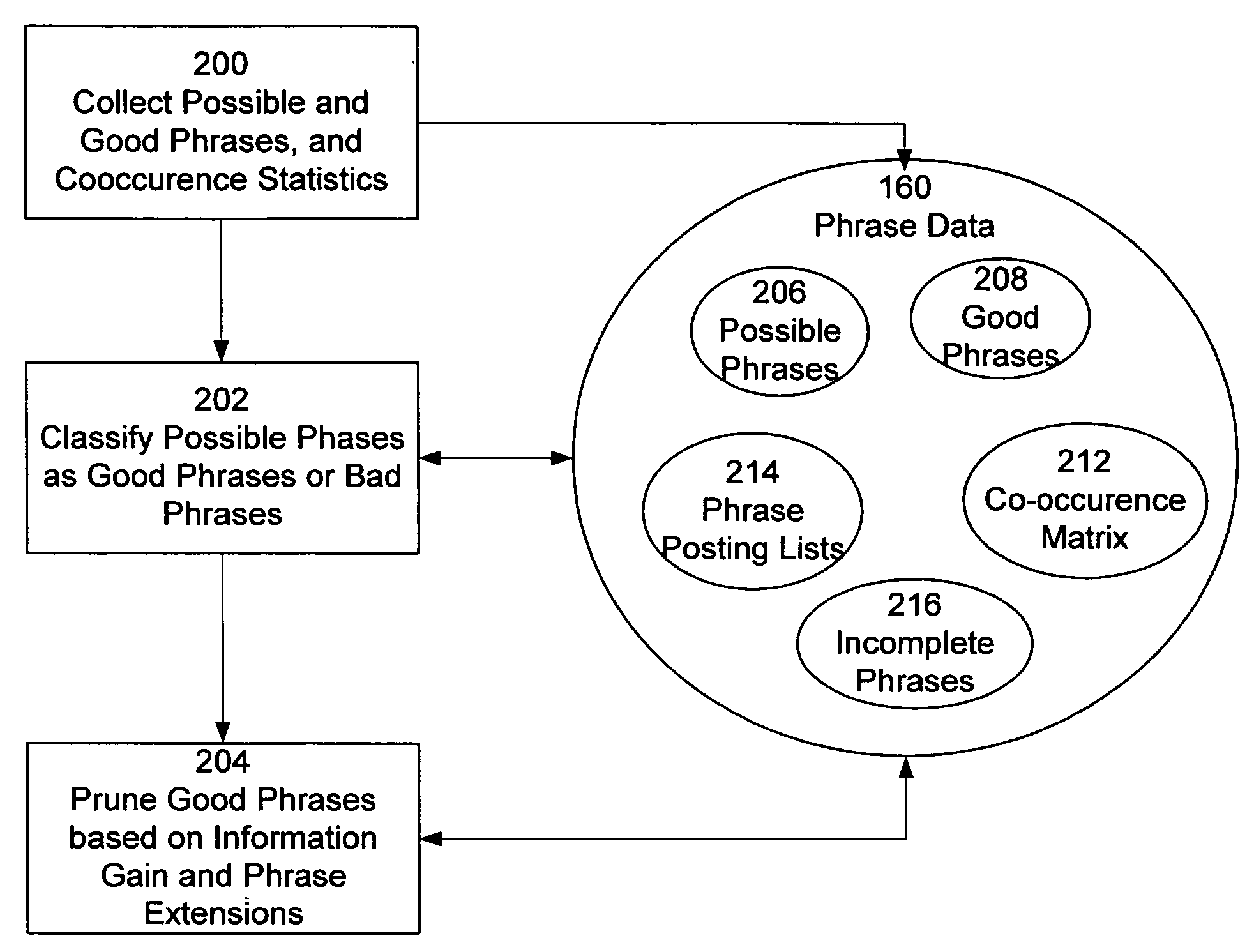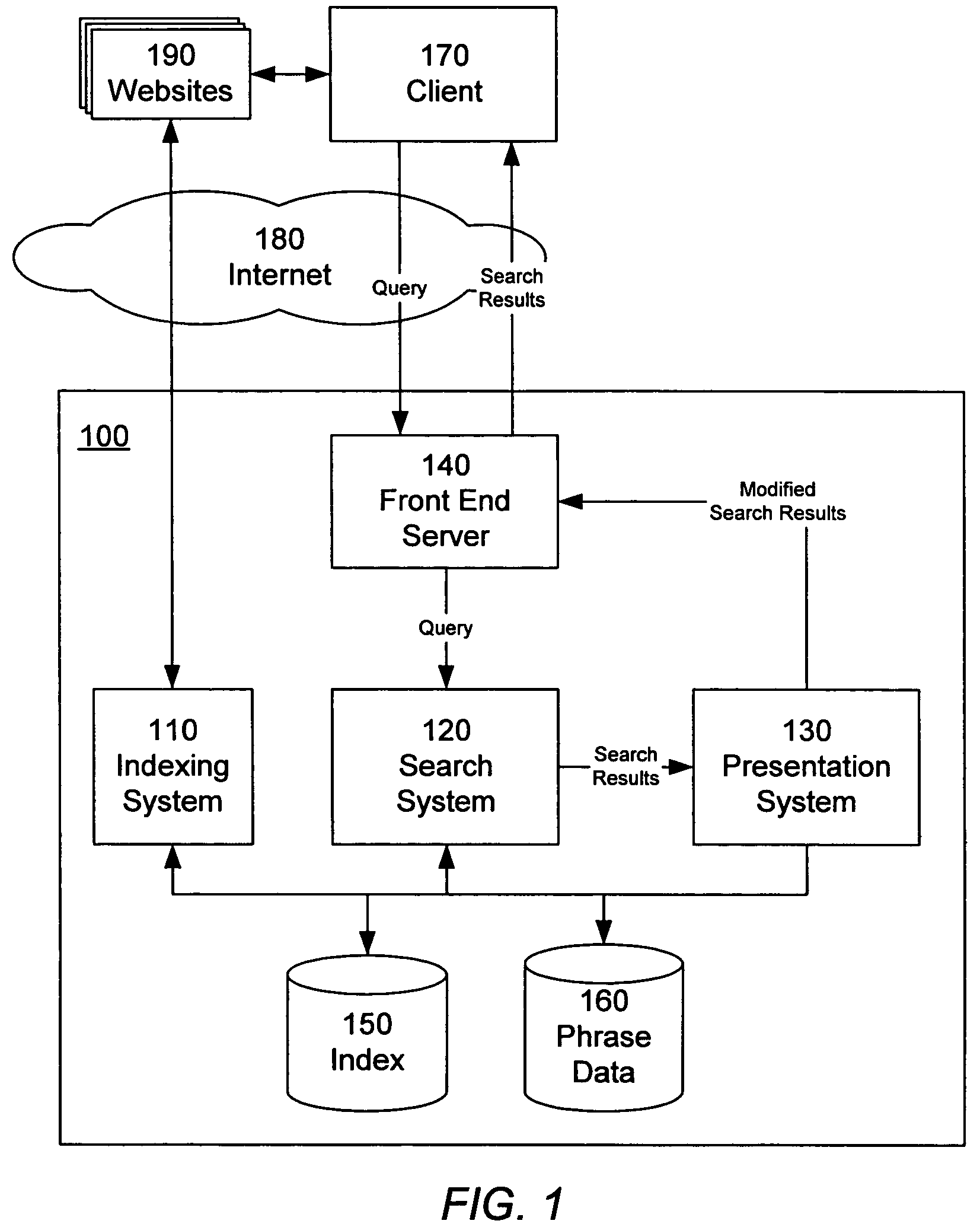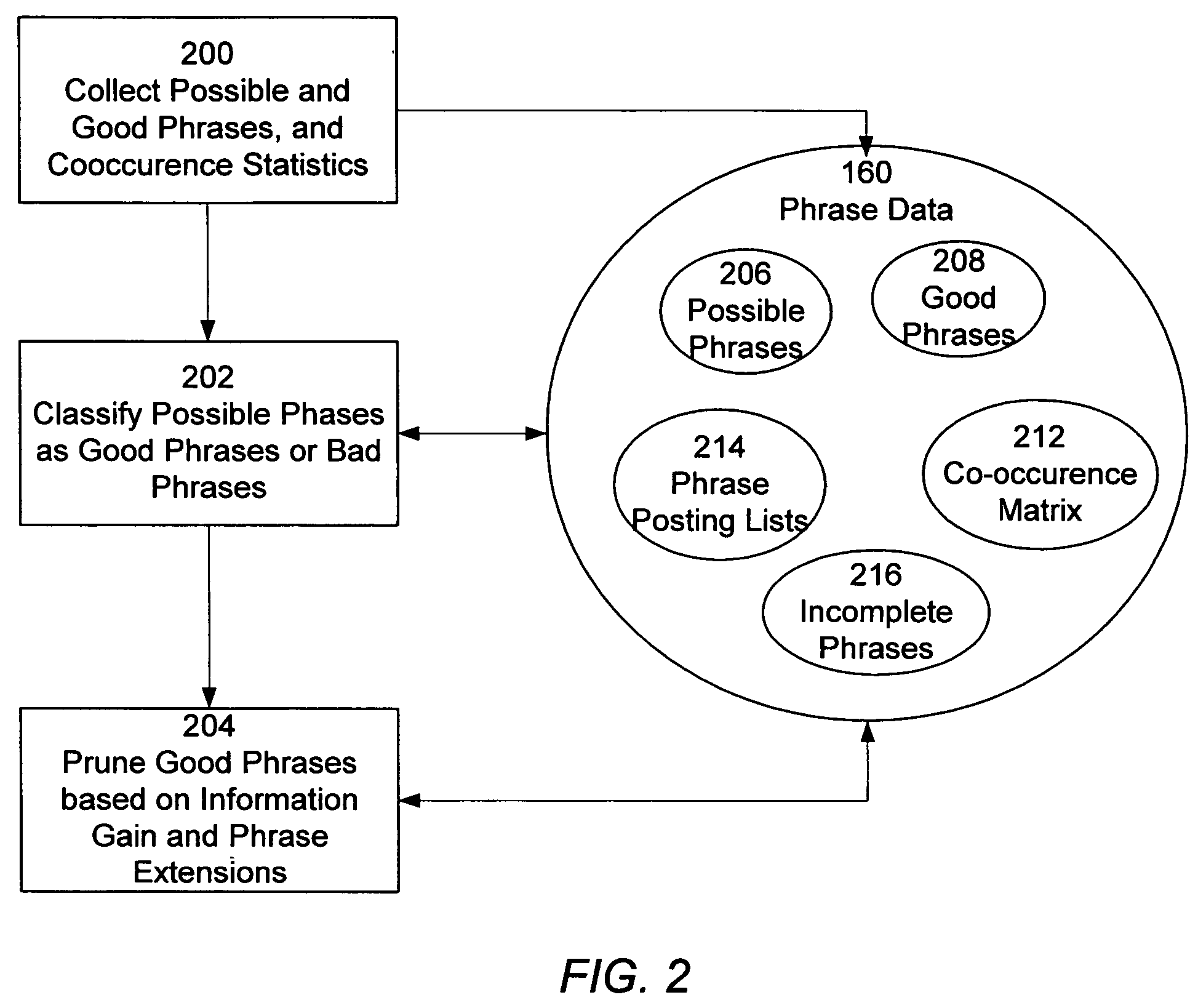Phrase-based searching in an information retrieval system
a technology phrase-based search, which is applied in the field of information retrieval system, can solve the problems of not typically capturing topical relationships, unable to direct “boolean” matching of query terms, and unable to match query terms in terms of usag
- Summary
- Abstract
- Description
- Claims
- Application Information
AI Technical Summary
Benefits of technology
Problems solved by technology
Method used
Image
Examples
Embodiment Construction
[0036]I. System Overview
[0037]Referring now to FIG. 1, there is shown the software architecture of an embodiment of a search system 100 in accordance with one embodiment of present invention. In this embodiment, the system includes a indexing system 110, a search system 120, a presentation system 130, and a front end server 140.
[0038]The indexing system 110 is responsible for identifying phrases in documents, and indexing documents according to their phrases, by accessing various websites 190 and other document collections. The front end server 140 receives queries from a user of a client 170, and provides those queries to the search system 120. The search system 120 is responsible for searching for documents relevant to the search query (search results), including identifying any phrases in the search query, and then ranking the documents in the search results using the presence of phrases to influence the ranking order. The search system 120 provides the search results to the pres...
PUM
 Login to View More
Login to View More Abstract
Description
Claims
Application Information
 Login to View More
Login to View More - R&D
- Intellectual Property
- Life Sciences
- Materials
- Tech Scout
- Unparalleled Data Quality
- Higher Quality Content
- 60% Fewer Hallucinations
Browse by: Latest US Patents, China's latest patents, Technical Efficacy Thesaurus, Application Domain, Technology Topic, Popular Technical Reports.
© 2025 PatSnap. All rights reserved.Legal|Privacy policy|Modern Slavery Act Transparency Statement|Sitemap|About US| Contact US: help@patsnap.com



